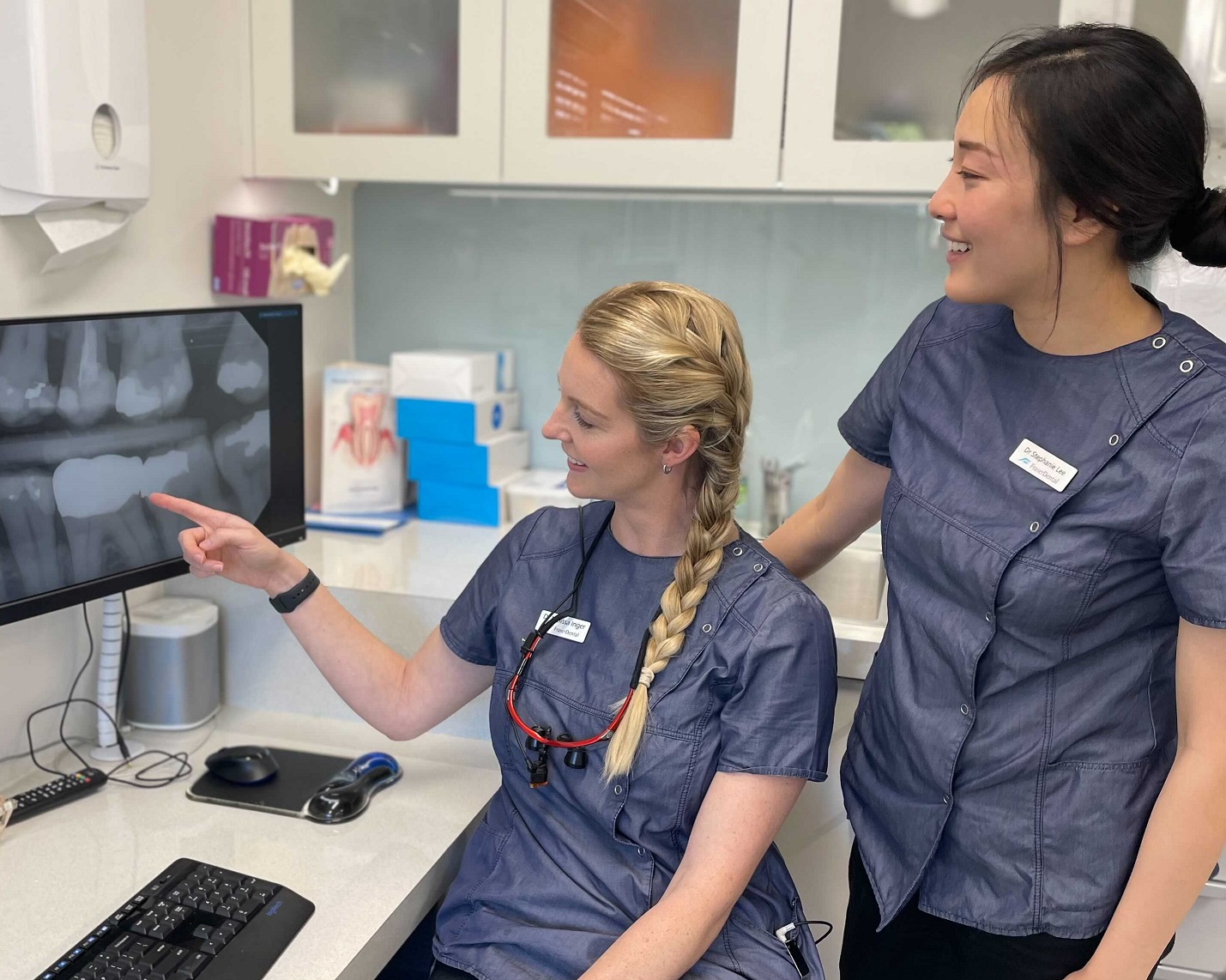Tooth bridges and dental crowns are used together to replace missing teeth.
As the name suggests, a bridge is a fixed prosthetic device used to “bridge” the gap caused by one or more missing teeth. When you are missing a tooth, the surrounding teeth gradually shift or rotate into the gap and this causes your bite to be misaligned. It also increases your chances of developing gum disease. In order to preserve your bite, we use a combination of bridges, crowns and replacement teeth.
How Do Bridges Work?
Bridges are cemented to the teeth (or implants) neighbouring the gap, which are called abutments and effectively hold the bridge in place. A replacement tooth is attached to the crowns which cover the abutments, spanning the gap and restoring your bite. Dental bridges can provide a number of benefits:
- Restore the aesthetics of your smile
- Restore your ability to chew and eat without restrictions
- Restore your ability to enunciate your speech
- Prevent teeth from moving out of position and preserve the shape of your face

How Are Dental Bridges Different To Dental Implants?
In order for bridges to be an effective option for replacing a missing tooth, the adjacent teeth next to the gap must be healthy to provide the support. In contrast, dental implants do not put any strain on other teeth.
A dental bridge is also different to a dental implant as they usually need to be replaced every 10-15 years, whereas a dental implant is considered to be a permanent tooth replacement solution. With proper care, including good oral hygiene dental bridges can last even longer than 15 years.
Getting A Tooth Bridge
Getting a bridge fitted usually involves several appointments. At the first appointment, preparations and impressions are made for the permanent bridge, and a temporary bridge is fitted to protect the teeth and gums. At the second appointment, the temporary bridge will be replaced with the permanent bridge, and several subsequent appointments may be necessary to get the fit perfect for your framework and bite. Once it is fitting perfectly it will be cemented into place.
As with all of our dental procedures, we make sure that we do everything possible to keep the process comfortable and pain-free, using local anaesthetic to numb the entire affected area.